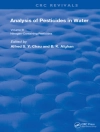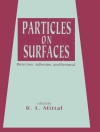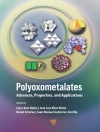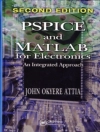Medical Product Regulatory Affairs
Hands-on guide through the jungle of medical regulatory affairs for every professional involved in bringing new products to market
Based on a module prepared by the authors for an MSc course offered by the University of Limerick, Ireland, Medical Product Regulatory Affairs is a comprehensive and practical guide on how pharmaceutical and medical devices are regulated within the major global markets. The Second Edition builds on the success of the first with an even wider scope and full coverage of new EU regulations on the safe use of medical devices.
Following a look at drug development, complete sections are devoted to national and EU regulatory issues, manufacturing license application and retention, and regulation in the USA. Other topics dealt with include CDER, CBER and marketing and manufacturing licenses, the ICH process and Good Laboratory/Clinical/ Manufacturing Practices.
Medical Product Regulatory Affairs includes information on:
- Aims and structure of regulation, covering purpose and principles of regulation, national and EU legislative processes, and pharmacopeia
- Regulatory strategy, covering product development and manufacturing, market vigilance, quality assurance systems, personnel, and documentation
- Drug discovery and development, covering prescription status, physical properties, therapeutic use, and drug discovery, development, and delivery
- Non-clinical studies, covering non-clinical study objectives and timing, pharmacological and pharmacodynamic studies, and bioavailability and bioequivalence
- Clinical trials, covering trial protocol, monitoring of trials, trial master files, and FDA communications
The wide coverage of different product types and the main global markets makes Medical Product Regulatory Affairs ideal for training courses on regulatory affairs in academia and industry. It is also a valuable reference for pharmacologists, bioengineers, pharma engineers, and students in pharmacy to familiarize themselves with the topic.
表中的内容
1 The Aims and Structure of Regulations 1
1.1 Introduction 1
1.2 Purpose and Principles of Regulation 1
1.3 The Legal Framework for Regulation 3
1.3.1 National Legislative Process 3
1.3.2 EU Legislative Process 4
1.3.3 Working with Legal Texts 6
1.3.4 Guidance Documents 7
1.3.5 Pharmacopoeia 7
1.4 Basic Legislation 7
1.4.1 EU Legislation 7
1.4.2 US Legislation 12
1.5 Scope of the Legislation 15
1.6 Chapter Review 20
1.7 Further Reading 21
2 Regulatory Strategy 23
2.1 Chapter Introduction 23
2.2 Basic Regulatory Strategy 23
2.2.1 Product Development 23
2.2.2 Product Manufacture 23
2.2.3 Market Vigilance 24
2.3 Quality Assurance Systems 25
2.3.1 Personnel 25
2.3.2 Documentation 25
2.3.3 Facilities and Equipment 26
2.3.4 Corrective and Preventative Action 27
2.4 Validation 27
2.5 Regulatory Bodies 29
2.5.1 European Commission 29
2.5.2 The EMA 30
2.5.3 National Competent Authorities 32
2.5.4 Notified Bodies 34
2.5.5 The FDA 35
2.5.6 US Department of Agriculture (USDA) 39
2.5.7 Pharmacopoeia Authorities 39
2.6 International Harmonisation Bodies 40
2.7 International Council for Harmonisation of Technical Requirements for Pharmaceuticals for Human Use 41
2.7.1 VICH 43
2.7.2 The International Medical Device Regulators Forum (IMDRF) 43
2.8 Pharmaceutical Inspection Cooperation Scheme (PICS) 44
2.9 The World Health Organisation (WHO) 45
2.10 Chapter Review 45
2.11 Further Reading 46
3 Drug Discovery, Classification and Early Stage Development 47
3.1 Chapter Introduction 47
3.2 Drug Categorisation 47
3.2.1 Prescription Status 47
3.2.2 Physical Properties 48
3.2.3 Mode of Action 48
3.2.4 Therapeutic Use 49
3.3 Drug Discovery 51
3.3.1 Target Discovery and Validation 52
3.3.2 Lead Discovery, Validation and Optimisation 57
3.4 Drug Development 58
3.4.1 Manufacture and Control 59
3.5 Drug Delivery 59
3.5.1 Location 60
3.5.2 Drug Characteristics 60
3.5.3 Speed and Duration of Therapeutic Effect 62
3.5.4 Stability 63
3.6 Chapter Review 63
3.7 Further Reading 63
4 Non-clinical Studies 65
4.1 Chapter Introduction 65
4.2 Non-clinical Study Objectives and Timing 65
4.3 Pharmacological Studies 69
4.3.1 Pharmacodynamic Studies 70
4.3.2 Pharmacokinetic/Toxicokinetic Studies 72
4.4 Bioavailability and Bioequivalence 73
4.5 Toxicology Studies 74
4.5.1 Toxicity Studies 74
4.5.2 Genotoxicity Studies 75
4.5.3 Carcinogenicity Studies 76
4.5.4 Reproductive Toxicology Studies 76
4.6 Chemistry, Manufacturing and Control Development (CMC) 77
4.7 Quality by Design (Qb D) 77
4.8 Quality of Biotech Products 78
4.8.1 Stability Studies 78
4.9 Good Laboratory Practice (GLP) 78
4.10 Chapter Review 80
4.11 Further Reading 83
5 Clinical Trials 85
5.1 Chapter Introduction 85
5.2 Clinical Trials 85
5.2.1 Phase I Trials 86
5.2.2 Phase II Trials 86
5.2.3 Phase III Trials 87
5.3 Clinical Trial Design 88
5.4 Good Clinical Practice 90
5.5 Clinical Trials in the EU 90
5.5.1 Sponsor 93
5.5.2 Investigator’s Brochure (IB) 93
5.5.3 Investigator 94
5.5.4 Trial Protocol 94
5.5.5 Investigational Medicinal Product Dossier (IMPD) 94
5.5.6 Informed Consent 94
5.5.7 Manufacture of Investigational Medicinal Product 95
5.5.8 Clinical Trial Authorisation 95
5.5.9 Independent Ethics Committee Opinion 96
5.5.10 Amendments to Clinical Trials 97
5.5.11 Case Report Forms (CRFs) 97
5.5.12 Adverse Event Reporting 97
5.5.13 Annual Safety Report 98
5.5.14 Monitoring of Trials 98
5.5.15 End of Trial 98
5.5.16 Trial Master File 98
5.6 Clinical Trials in the US 100
5.6.1 Investigational New Drug Application (IND) 100
5.6.2 Institutional Review Board (IRB) 103
5.6.3 Communication with the FDA 104
5.6.4 Labelling of Investigational Drugs 105
5.6.5 Registry of Clinical Trial Information 105
5.7 Chapter Review 105
5.8 Further Reading 106
6 Marketing Authorisation 109
6.1 Chapter Introduction 109
6.2 The Application Dossier 109
6.3 CTD 110
6.3.1 Module Structure 112
6.3.2 Module 3 – Quality 113
6.3.3 Drug Master Files 116
6.3.4 Module 4 – Non-clinical Study Reports 116
6.3.5 Module 5 – Clinical Study Reports 116
6.3.6 Module 2 – Summaries 118
6.3.7 Module I – Region Specific 120
6.3.8 Module 1 – EU 121
6.3.9 Module 1 – US 123
6.4 Submission and Review Process in the EU 127
6.4.1 Union Authorisation 128
6.4.2 Scientific Evaluation Process 129
6.4.3 Decision Making Process 130
6.4.4 National Authorisations 132
6.4.5 Decentralised Procedure 132
6.4.6 Mutual Recognition Procedure 134
6.4.7 Plasma Master Files and Vaccine Antigen Master Files 134
6.5 Submission and Review Process in the US 134
6.6 Chapter Review 138
6.7 Further Reading 138
7 Authorisation of Veterinary Medicines 139
7.1 Chapter Introduction 139
7.2 Overview of Development Process for Veterinary Medicines 139
7.2.1 Pre-clinical Studies 140
7.2.2 Clinical Trials 141
7.2.3 Good Clinical Practices 141
7.3 Authorisation of Clinical Trials in the EU 145
7.4 Authorisation of Clinical Trials in the US 146
7.5 Maximum Residue Limits (MRLs) 147
7.6 Authorisation of Veterinary Medicines in the EU 149
7.6.1 Applications to Establish MRLs 149
7.6.2 Review of Applications and Establishment of MRLs 152
7.6.3 Marketing Authorisations 156
7.6.4 Presentation of the Dossier 156
7.7 Approval of Veterinary Medicines in the US 158
7.7.1 New Animal Drug Application (NADA) 158
7.7.2 Approval of Veterinary Biological Products 163
7.8 Chapter Review 164
7.9 Further Reading 164
8 Variations to the Drug Authorisation Process 165
8.1 Chapter Introduction 165
8.2 Provisions in Support of Special Drug Applications 165
8.2.1 Orphan Drugs 165
8.2.2 Paediatric Applications 167
8.3 Accelerated Access to New Drug Therapies 170
8.3.1 EMA Accelerated Review and Conditional Marketing Routes 170
8.3.2 EU Compassionate Use 171
8.3.3 Expedited Pathways in the US 171
8.3.4 Expanded Access and Emergency Use Authorization (EUA) 174
8.4 Approval of New Drugs When Human Efficacy Studies Are Not Ethical or Feasible 175
8.5 Animal Drugs for Minor Use and Minor Species 176
8.5.1 Conditional Approval 176
8.5.2 Indexing 176
8.5.3 Designation 176
8.6 Special Provisions to Facilitate Access to Drugs for Animal Treatment in the EU 177
8.7 Changes to an Authorised Drug 177
8.8 EU System for Processing Changes 177
8.8.1 Extension Applications 178
8.8.2 Major Variation (Type II) 178
8.8.3 Minor Variation (Type IA or IB) 179
8.9 Processing Changes in the US 179
8.9.1 Manufacturing Change Supplements 180
8.9.2 Major Changes 180
8.9.3 Moderate Changes 180
8.9.4 Minor Changes 181
8.10 Authorisation of Generic Drugs 181
8.10.1 EU Regulations 181
8.10.2 US Regulations 182
8.11 Biosimilars 183
8.11.1 EU Regulations 184
8.11.2 US Regulations 185
8.12 Reference Drug Exclusivity 189
8.13 Other Authorisation Procedures 191
8.13.1 Well-Established Medical Use Products 191
8.13.2 Combination Products 191
8.13.3 Homeopathic Medicines 192
8.13.4 Traditional Herbal Medicines 192
8.13.5 US Regulation of OTC Drugs 193
8.14 Chapter Review 193
8.15 Further Reading 194
9 Medical Devices 195
9.1 Chapter Introduction 195
9.2 Regulatory Strategy for Medical Devices in the EU 195
9.2.1 Use of Standards to Establish Conformity 200
9.2.2 Classification of Devices 201
9.3 Regulatory Strategy for Medical Devices in the US 210
9.3.1 Classification of Devices 210
9.3.1.1 Class I 211
9.3.1.2 Class II 211
9.3.1.3 Class III 211
9.3.2 Classification of New Devices 212
9.4 Development of Devices 212
9.4.1 Design Controls 213
9.4.2 Design and Development Planning 214
9.4.3 Design Input 214
9.4.4 Design Output 216
9.4.5 Design Verification and Design Validation 216
9.4.6 Design Review 217
9.4.7 Risk Analysis 218
9.4.8 Design Changes 218
9.5 Chapter Review 218
9.6 Further Reading 219
10 Authorisation of Medical Devices 221
10.1 Chapter Introduction 221
10.2 Evaluation of Medical Devices in Europe 221
10.2.1 Clinical Evaluation 221
10.2.2 Clinical Investigations 222
10.2.3 Performance Evaluation of IVDs 225
10.2.4 Performance Studies of IVDs 225
10.3 Evaluation of Medical Devices in the US 226
10.3.1 Exempted Investigations 227
10.3.2 Abbreviated Requirement Investigations 227
10.3.3 IDE Investigations 227
10.3.4 Labelling of Devices for Investigational Use 229
10.4 Placing of Devices on the Market in the EU 230
10.4.1 Designation of Notified Bodies 230
10.4.2 Conformity Assessment Procedures 232
10.4.2.1 Conformity Assessment Based on a Quality Management System and Assessment of Technical Documentation 233
10.4.2.2 EU Type-Examination 235
10.4.2.3 Production Quality Assurance 235
10.4.2.4 EU Verification 235
10.4.2.5 EU (Self) Declaration of Conformity 236
10.4.3 Technical Documentation 236
10.4.4 Labelling Requirements 236
10.4.5 Registration of Economic Operators and Devices 238
10.5 Placing of Devices on the Market in the US 238
10.5.1 510(k) Pre-market Notification 239
10.5.2 Traditional 510(k) 239
10.5.3 Abbreviated 510(k) 239
10.5.4 Special 510(k) 239
10.5.5 De Novo 510(k) 240
10.5.6 Notification and Review Procedures 240
10.5.7 Pre-market Approval (PMA) 240
10.5.8 Changes to a PMA-Approved Device 241
10.5.9 Humanitarian Use Devices (HUDs) 243
10.5.10 Labelling of Devices 243
10.6 Chapter Review 243
10.7 Further Reading 244
11 Good Manufacturing Practice (GMP) 245
11.1 Chapter Introduction 245
11.2 Drug GMP Regulations and Guidance 245
11.3 Essential GMP Requirements 248
11.3.1 Quality Assurance System 248
11.3.2 Personnel 248
11.3.3 Premises and Equipment 249
11.3.4 Documentation 257
11.3.5 Production 257
11.3.6 Quality Control 258
11.3.7 Work Contracted Out 259
11.3.8 Complaints, Product Recall and Emergency Un-blinding 259
11.3.9 Self-inspection 259
11.4 Validation 260
11.4.1 Facilities and Equipment Validation 261
11.4.2 Process Validation 262
11.4.3 Computer Systems Validation 262
11.4.4 Methods Validation 265
11.4.5 Cleaning Validation 266
11.4.6 Validation of Sterilisation Procedures 267
11.4.7 Water Purification System Validation 268
11.5 GMP Requirements for Devices 268
11.6 Chapter Review 273
11.7 Further Reading 273
12 Oversight and Vigilance 275
12.1 Chapter Introduction 275
12.2 Registration of Manufacturers and Other Entities 275
12.3 Manufacturing Authorisation of Medicinal Products in the EU 275
12.3.1 Wholesale Distribution of Medicinal Products 276
12.3.2 Registration of Economic Operators for Medical Devices on the EU market 278
12.4 Registration of Producers of Drugs and Devices in the US 278
12.5 Additional Licensing Requirements 279
12.6 Inspections 279
12.6.1 Inspection Techniques 280
12.6.2 Audit Findings and Consequences 286
12.7 Market Vigilance and Oversight of Drugs 289
12.7.1 Pharmacovigilance in the EU 289
12.7.2 Pharmacovigilance Risk Assessment Committee (PRAC) and the Eudra Vigilance System 290
12.7.3 Pharmacovigilance and Marketing Authorisation Holders 293
12.7.4 Pharmacovigilance Inspections and Audits 294
12.7.5 Renewal of Marketing Authorisations 295
12.7.6 Pharmacovigilance and Reporting in the US 295
12.7.7 Periodic Reports 296
12.8 Advertising and Promotion 297
12.9 Market Vigilance and Oversight of Devices 298
12.9.1 Market Vigilance in the EU 298
12.9.2 Medical Device Vigilance in the US 299
12.9.3 Medical Device Reporting 299
12.9.4 Reports of Corrections and Removals 300
12.9.5 Post-market Surveillance 302
12.10 Chapter Review 303
12.11 Further Reading 303
Index 305
关于作者
John J. Tobin worked for many years and in various capacities within Olympus diagnostica Gmb H, a company that employed several 100 people to develop and manufacture in vitro diagnostic reagents.
Gary Walsh is chair of industrial biotechnology at the University of Limerick, Ireland. He has direct industrial experience within the pharmaceutical and diagnostic industries as well as extensive teaching and research interests in the pharmaceutical and biotechnology arena.












